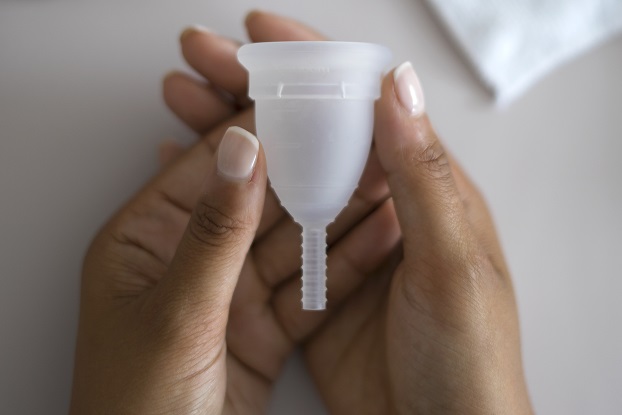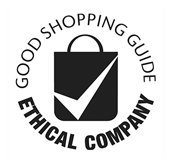Young person’s guide to period products
Which menstrual product should I start with?
Choosing the menstrual product that’s right for you can be a bit of an adventure, trying out different products to see what works best for you – there’s also likely to be a bit of trial and error along the way. Remember, you have many years of periods ahead. There will be plenty of time to try out different options as your lifestyle and needs grow and change over the years. So there’s no rush!
Basically, you can divide the choices into external and internal products, and reusable or disposable products. Below we’ll take a look at some of the options out there. You might also find this NHS video on period product options helpful.
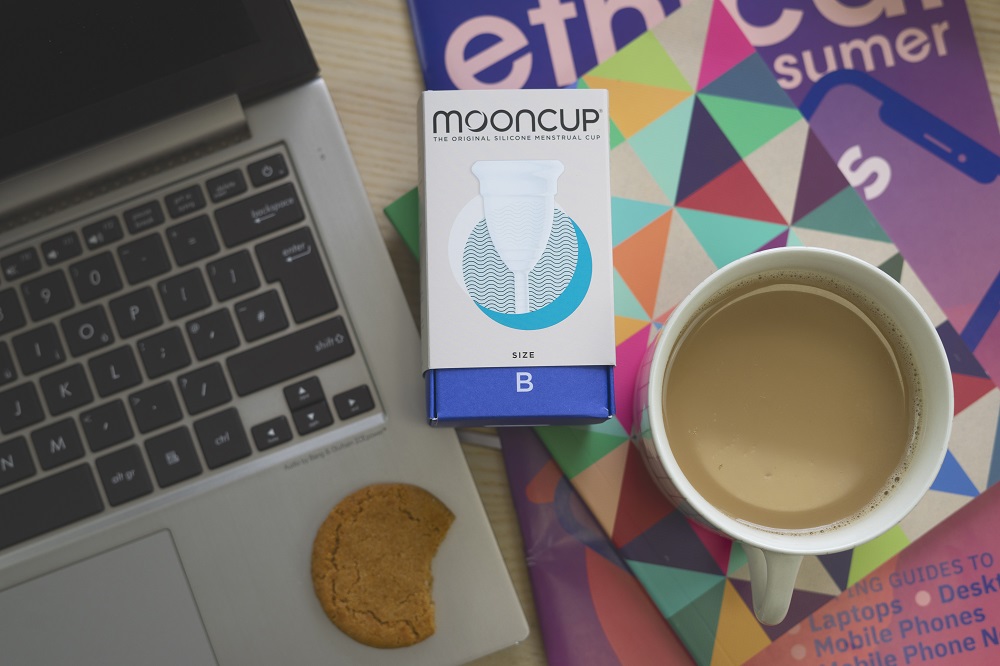
Should I use an external or internal product?
You can choose to use either external or internal menstrual products – or a mixture of both – whatever feels right for you.
- External products are worn outside the body (not inserted inside your vagina) – they absorb the blood once it leaves the vagina. Examples of external products are disposable and reusable sanitary pads, and period pants/knickers.
- Internal products are inserted into the vagina to collect or absorb your menstrual fluid. Examples of these are menstrual cups and tampons.
When you first start your period, go easy on yourself – external products like pads and periods pants can be great while you’re getting used to having your period.
As you become more confident you might want to think about using an internal product – particularly if you want to do things like swim on your period. If you’re thinking about switching to an internal product we’d suggest talking about it with an adult you trust.
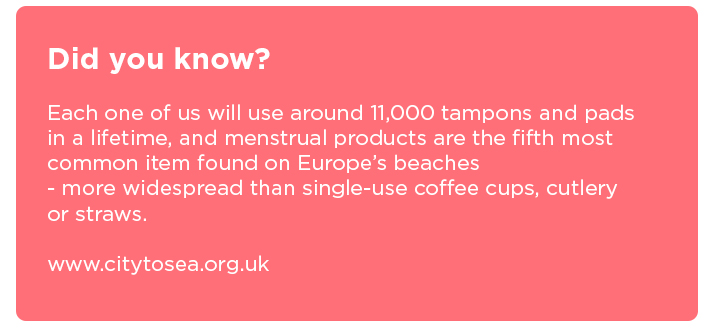
Another thing to consider is whether the first menstrual product you choose is disposable or reusable.
Thankfully, there’s a variety of eco options available, which means you can still care for the planet without necessarily having to head straight for reusables.
External products
Disposable pads
- Disposable pads are made from a layer of absorbent material – one side sticks to your underwear and the other absorbs your menstrual flow as it leaves the vagina.
- Pads come in different sizes and thicknesses – you can choose the right one for you depending on your flow.
- Pads must be disposed of in a bin (and can’t be flushed down the toilet) – most public toilets will have a bin especially for this.
- The good news is that there are more environmentally friendly disposable options out there.
- Brands such as Natracare make organic cotton and plastic-free pads and tampons.
- When shopping for disposables look out for plastics in the packaging, wrappers and applicators and you’ll already be making a huge improvement for the environment!

Reusable pads and panty liners
- If you want to try reusables, then reusable pads and panty liners can be a good first option – they can be washed and used again from period to period.
- They can be made from a range of materials like bamboo or cotton, and come in different absorbency options, fabric designs and colours.
- There are even patterns online if you fancy sewing your own!
- If you need to change your pad while you’re out and about you’ll need to carry the used pad in your bag until you get home (some companies provide a waterproof carry bag).
- Most brands will recommend soaking or rinsing the pads in cold water (which helps minimise staining) before putting them in the wash.
Period pants
- When it comes to reusables, period pants can also be a good place to start.
- Period pants look like normal underwear but have an additional absorbent layer built in – the pants collect your menstrual flow as it leaves the vagina.
- Like reusable pads, period pants come in different styles, fabrics and absorbencies.
- Depending on your flow you can use them on their own or alongside an internal period product.
- You’ll need at least one pair a day, though you may need more depending on your flow and the absorbency level of the pants.
- It’s worth thinking about the practicalities if you need to change your period pants when you’re out and about – this could mean having to remove your trousers, tights or leggings.
- Like reusable pads you might need to carry a used pair in your bag till you get home.
- Manufacturers often recommend soaking them in cold water before putting them in the wash.
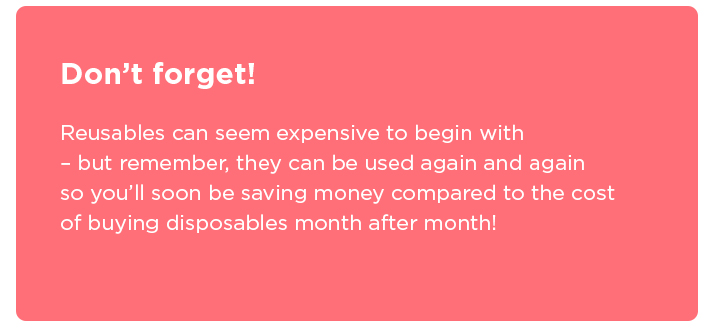
Internal Products
Tampons
- A tampon is a thin tube of absorbent material with a string attached – it is inserted into your vagina where it absorbs your menstrual flow.
- The string remains outside your body – when it’s time to change the tampon you can remove it by pulling on the string.
- Some tampons come with applicators which are designed to help you insert and position the tampon correctly – others don’t, and you just use your finger to push the tampon inside and get it comfortably positioned.
- Tampons also come in a range of different absorbencies – you need to use the lowest absorbency tampon for your flow.
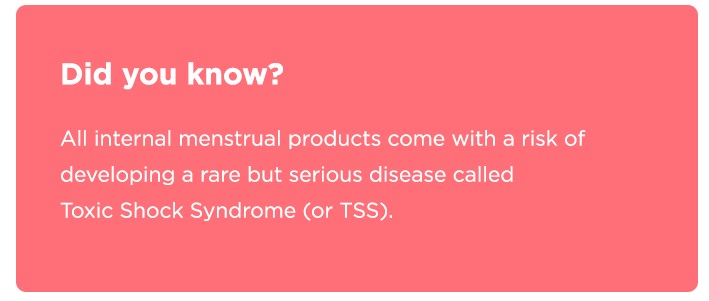
For more information on TSS you can check out the NHS website or take a look our Mooncup FAQ on TSS
- Tampons can be we worn for up to 4-8 hours and must also be disposed of in the bin – it’s important not to flush them down the toilet as they can then end up in the sea or on the beach.
- It’s worth bearing in mind that most tampon packaging and applicators are made from or contain non-biodegradable plastic.
- Additionally, many conventional tampons contain synthetic material, are bleached using chlorine and are made from cotton that may contain pesticides.
- However as mentioned there are some brands such as Natracare that make plastic-free tampons with applicators – look out for brands whose tampons are made from 100% organic cotton and are pesticide and chlorine free.
- Remember to watch out for brands using plastics in packaging, applicators and wrappers too.
Menstrual cups such as the Mooncup®
- Menstrual cups are worn inside the vagina and collect your blood rather than absorbing it. You only need one that is reused for every period.
- You use the same cup on both light and heavy days.
- To use it, you wet it, fold it and then insert it into your vagina. It sits as low down as it comfortably can (much lower than a tampon) where it collects your blood. There must be a gap between the rim of the Mooncup and the cervix.
- We recommend emptying the Mooncup menstrual cup at least every 4-8 hours. To remove it, you pinch the base of the cup to release the seal, and carefully take out the Mooncup. You then empty the contents into the toilet, rinse the cup, and re-insert.
- You clean the Mooncup more thoroughly between periods and before first use.
- The Mooncup menstrual cup comes with a handy unbleached organic cotton bag for when you’re not using it.
- We recommend that you only switch to using a menstrual cup when you feel comfortable and confident with your periods and your body. If you’ve recently started your periods and are thinking about using a menstrual cup for the first time, please read this FAQ. Once you’re ready, it can be a great option for you and the environment, and you’ll be saving yourself money in the long run too!
- Menstrual cups come in different sizes and designs and can be made from a range of different materials (such as TPE plastic, silicone or latex).
- The Mooncup menstrual cup is made of medical grade silicone. It’s latex-free, and contains no dyes, perfumes, BPA, plastic, bleaches or toxins.
- How long a menstrual cup lasts, where it’s made, and the level of customer support you get while you’re getting the hang of using the cup will vary from brand to brand. That’s why it’s worth doing a bit of research when considering which one to choose.
- It can take time & patience to get the knack of using your first menstrual cup. It’s good to understand the practicalities of how to empty it in a public toilet (like at school or college) too. You can read more about this in our FAQs.
- Once you’ve got the hang of it, the Mooncup should be so comfortable you can’t feel it’s there. It can be a great option for travel and holidays, swimming and exercise too.
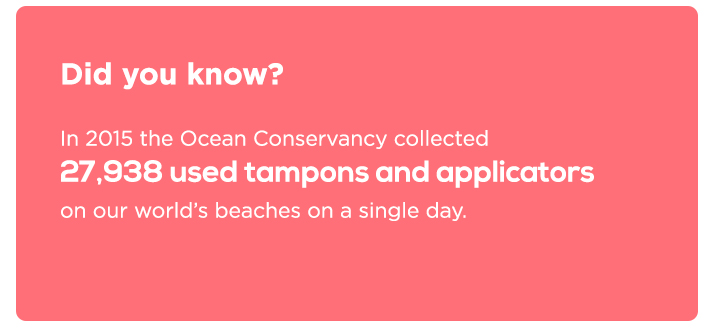
Making a choice that’s right for you
Choosing the menstrual product that’s right for you is a personal thing.
Different products could feel right on different days and nights during your period as well as at different times in your life.
Whatever menstrual product you choose can take a bit of practice and getting used to, but don’t worry – it won’t take long for it to become second nature.
Still have questions? Get in touch with our friendly Mooncup Advice Service run by medical health professionals: [email protected] or check out our Mooncup FAQs.
Read more on the blog
How is the Mooncup® menstrual cup environmentally friendly? 10 reasons
Top menstrual cup tips for a first-time Mooncup® user
Learn more about the hymen

